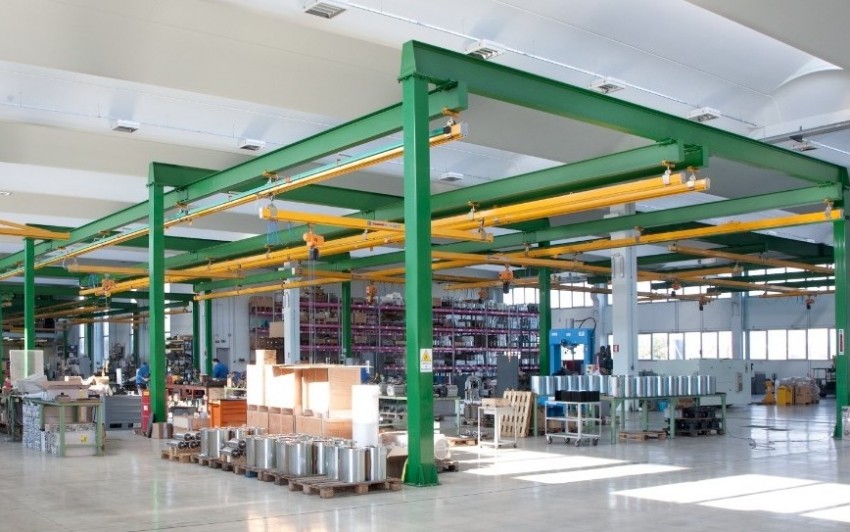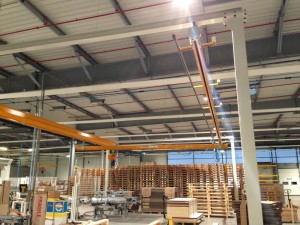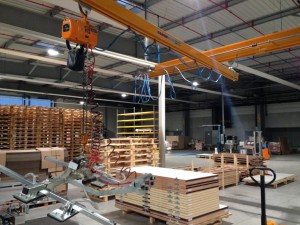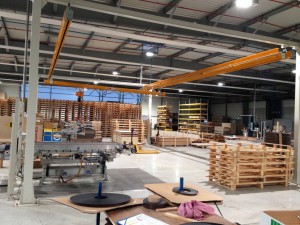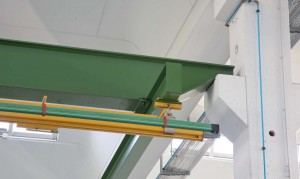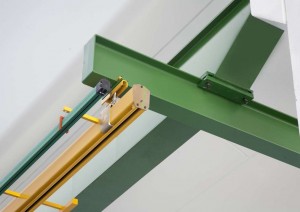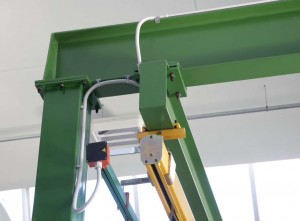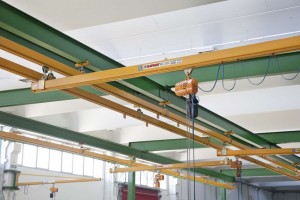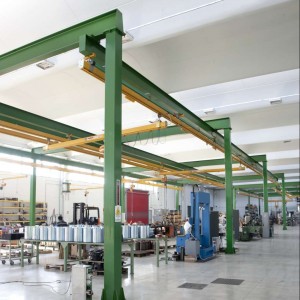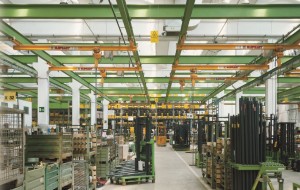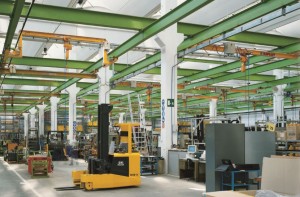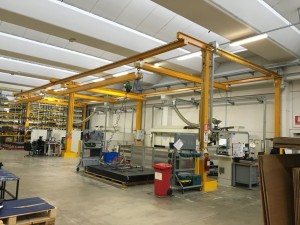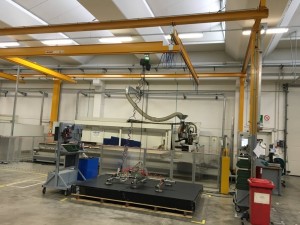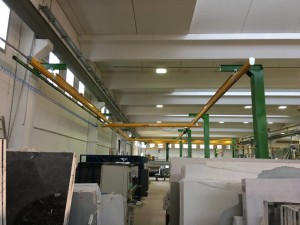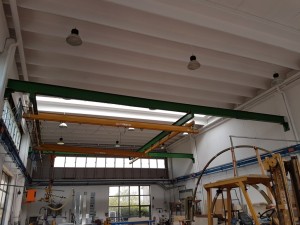Elephant designs and creates manually driven suspended units to fulfil the requirements for lifting and moving loads in a simple manner with minimum effort.
The suspended units are made up of modular sections which allow for personalizing the unit on the basis of the client’s requirements.
Indeed, these modular systems allow for optimum use in the work environment, with the possibility of arranging installations anchored to existing roofing structures, or simply the ceiling.
Elephant suspend units are recommended for those companies who need to move loads in a rapid, coordinated and effective manner over a large work area.
THE STRENGTHS OF SUSPENDED UNITS
The main strengths of this type of lifting unit are:
Ease of moving loads thanks to the articulated sliding heads;
reduced effective weight;
ease of assembly and reduction in installation times;
low maintenance;
a facility for future modifications to the unit;
reduced encumbrance height.
Furthermore, with a suspended unit, one enjoys, with the version anchored to the ceiling, a completely free working area, for which it is possible to operate freely without impediments.
TECHNICAL DATA
The capacity of Elephant suspended units are 125, 250, 500 and 1000 kg, while the maximum range is of 8 m.
| Capacity of Kg | 125 | 250 | 500 | 1000 |
SPECIFICATIONS OF THE UNIT
The suspended unit may be constructed, either with fixings to the ceiling and consequent suspended structure, or with suitable designed framework and anchored to the floor should the building roof structure not be load bearing.
The support structure is made-to-measure with metal columns anchored to the floor with chemical fixings. The structure may contain portals and longerons or columns with hinged arms. All joints and fixings are bolted in order to facilitate the assembly and installation operations.
The unit is made of ducted sections with articulated runways anchored to the framework or the ceiling; these are connected to the bridge using particular articulations which lighten the operator’s movements both in the start-out phase and that of halting.
Movement of the bridge is occasioned by use of particular trolleys with nylon wheels and guide bearings to limit noise and wear during movement.
On request, it is possible to make units with of reduced obstruction to increase the hook run, or to install more lifting points on pairs of runways to serve a greater number of work stations.
For heavy loads, twin-beam solutions are available with which it is possible to optimize the hook run, positioning the hoist between the runs themselves


